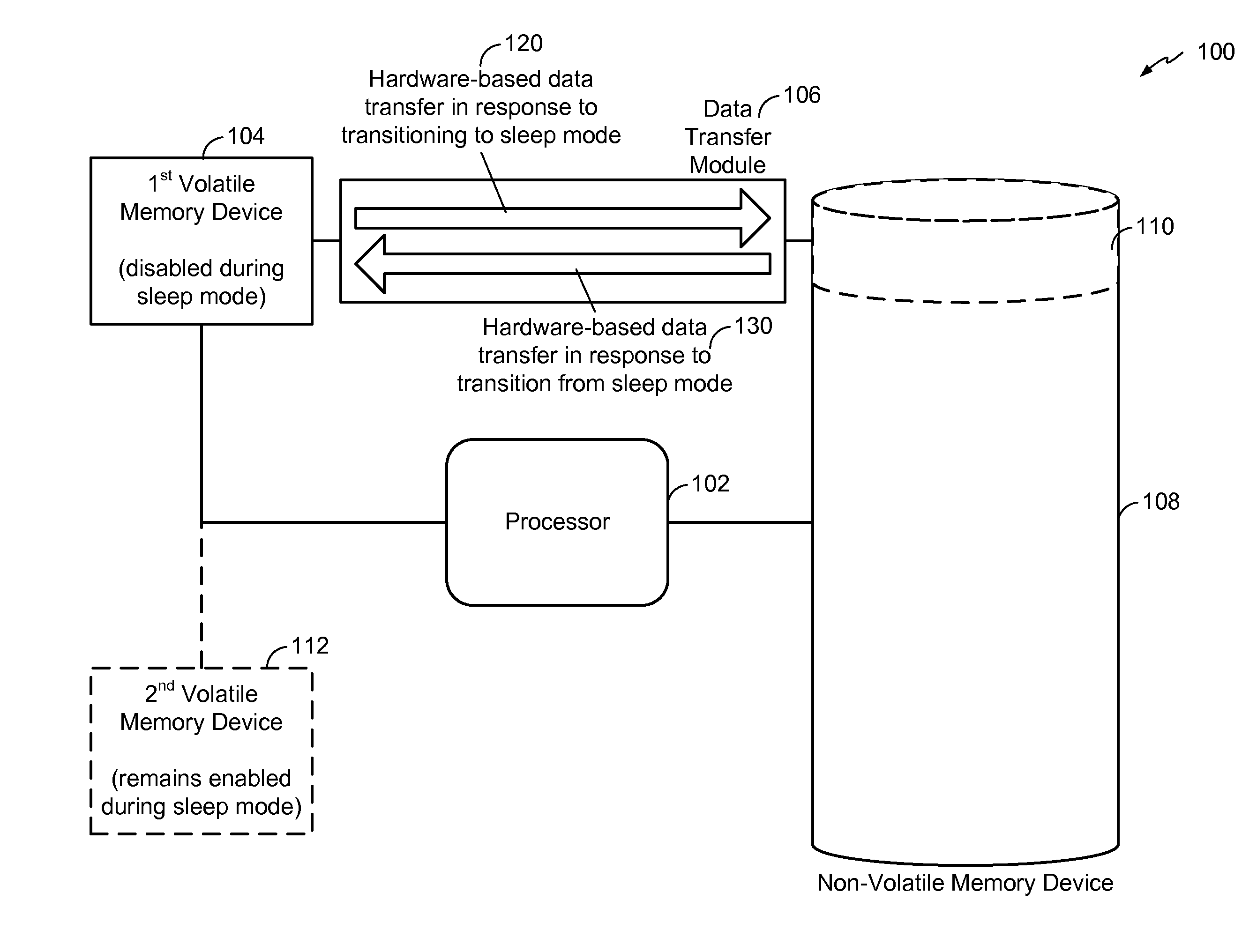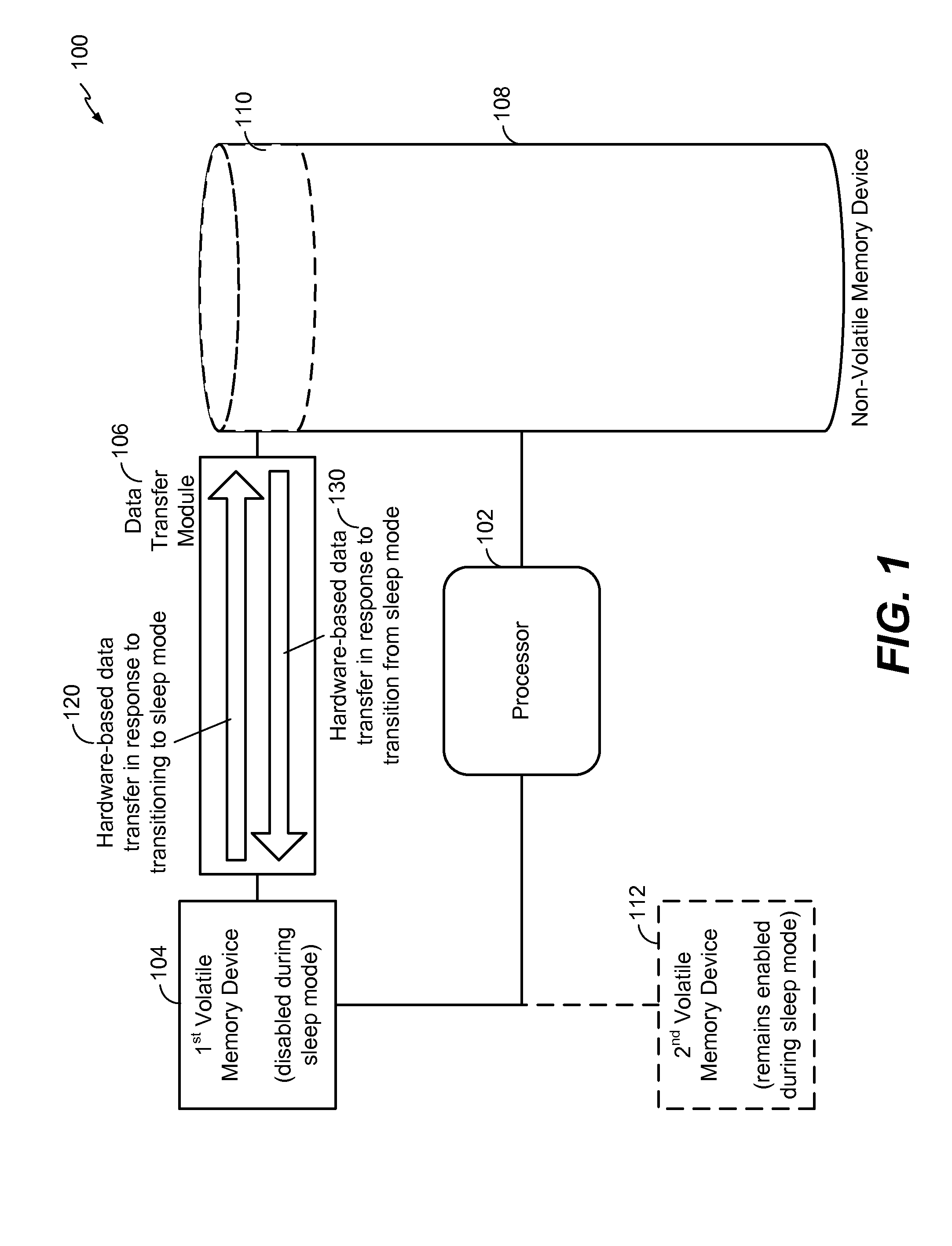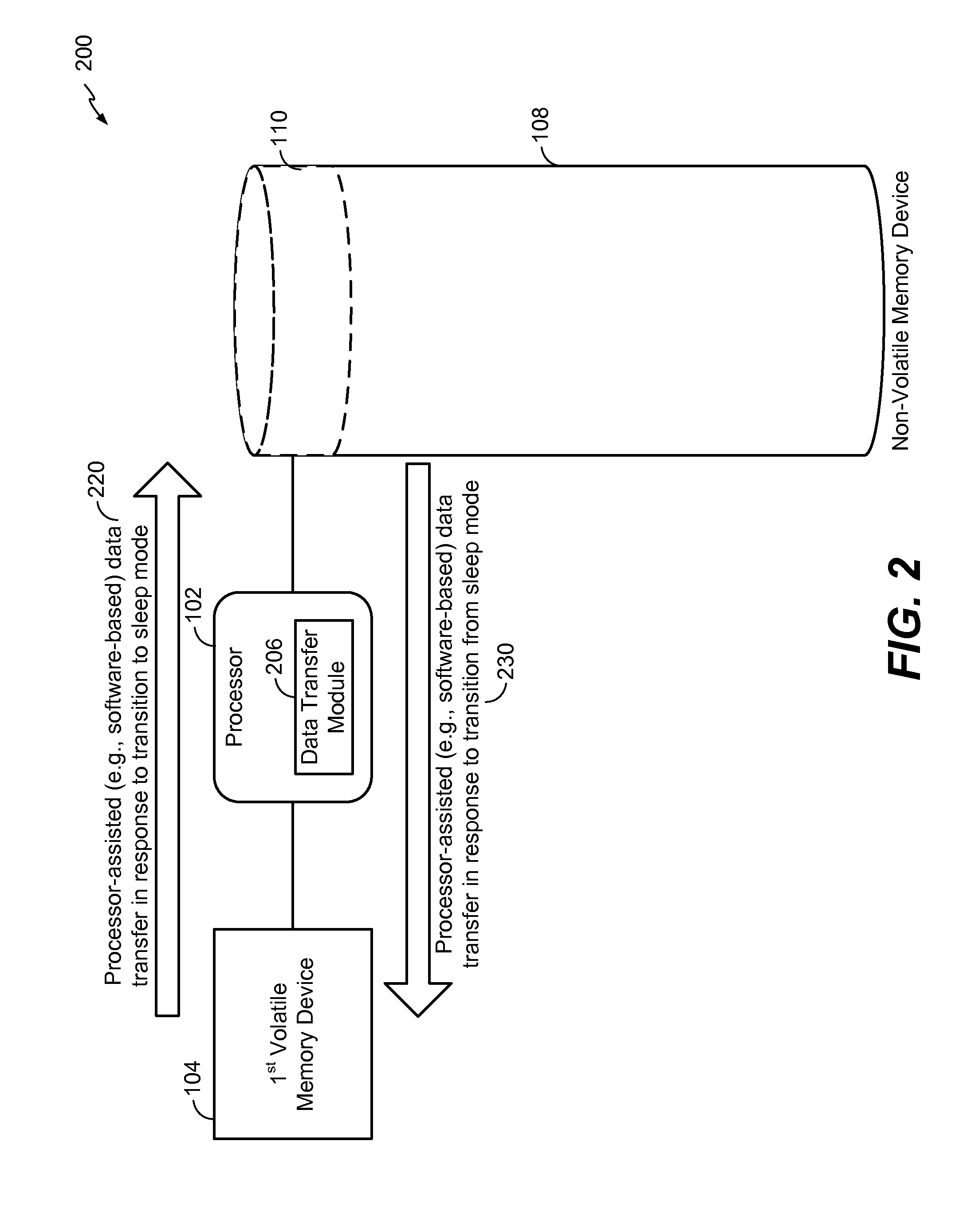Reducing power consumption of volatile memory via use of non-volatile memory
a non-volatile memory and power consumption technology, applied in memory adressing/allocation/relocation, high-level techniques, instruments, etc., can solve the problems of page migration involved in pasr, time-consuming and battery-intensive, page migration may also be difficult to implement, and performance reduction, etc., to achieve low-performance mode
- Summary
- Abstract
- Description
- Claims
- Application Information
AI Technical Summary
Benefits of technology
Problems solved by technology
Method used
Image
Examples
Embodiment Construction
[0024]FIG. 1 is a diagram to illustrate a particular embodiment of a system 100 of reducing power consumption of volatile memory by disabling the volatile memory, or a portion thereof, after processor-independent data transfer from the volatile memory to non-volatile memory. The system 100 may include a processor 102 that is coupled to a first volatile memory device 104 and the system 100 may include, or be coupled to, a non-volatile memory device 108. In a particular embodiment, the system 100 of FIG. 1 may be included within an electronic device, such as a mobile phone, a tablet computing device, a laptop computing device, etc.
[0025]In a particular embodiment, the first volatile memory device 104 includes random access memory (RAM). For example, the first volatile memory device 104 may be a dynamic random access memory (DRAM) device, such as a single-rank or dual-rank double data rate (DDR) synchronous DRAM device (also referred to herein as a “DDR”). When the first volatile memor...
PUM
 Login to View More
Login to View More Abstract
Description
Claims
Application Information
 Login to View More
Login to View More - R&D
- Intellectual Property
- Life Sciences
- Materials
- Tech Scout
- Unparalleled Data Quality
- Higher Quality Content
- 60% Fewer Hallucinations
Browse by: Latest US Patents, China's latest patents, Technical Efficacy Thesaurus, Application Domain, Technology Topic, Popular Technical Reports.
© 2025 PatSnap. All rights reserved.Legal|Privacy policy|Modern Slavery Act Transparency Statement|Sitemap|About US| Contact US: help@patsnap.com



